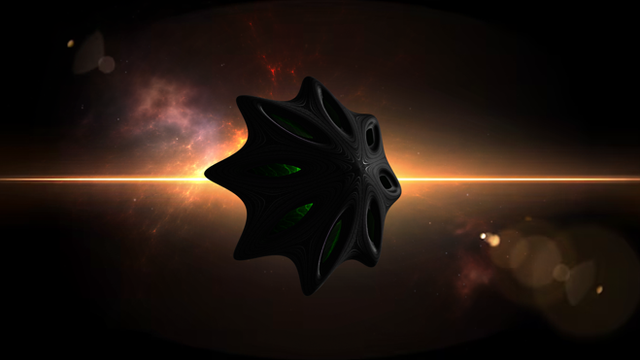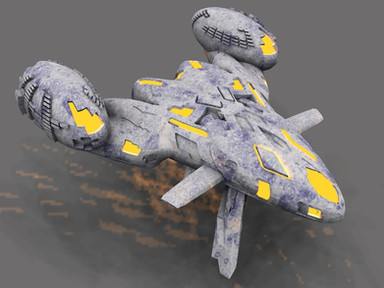HOME | DD
 NSSunset — RDF 'Loki'-Class Dropship - Zephyr Variant
NSSunset — RDF 'Loki'-Class Dropship - Zephyr Variant

#battletech #doga #dropship #nationstates #roleplaying #sciencefiction #scifi #spaceship
Published: 2019-03-14 04:41:52 +0000 UTC; Views: 1248; Favourites: 14; Downloads: 3
Redirect to original
Description
For NationStates; Modeled in DoGa with custom parts.----
One of the priorities of the Republic's Marine Command after the closing of the Dominion-Republic War was the pressing need for a fast logistics element that could keep pace with the high-energy pace of action in the field. The war against the Ynij government was no sprawling slog with millions of soldiers assembled on either side to be thrown into grinding attrition warfare; instead it was a series of discrete battles across planetary-sized fields numbering nearly twenty. A Marine battalion might find itself fighting in a city on one continent in the morning and then in a forest an ocean away by that evening. This left little opportunity for units on a short time frame to repair, reload, and recuperate; logistics vessels such as the Zenith-Class Transport were simply too slow and static in their deployment for such a dynamic terrestrial environment.
The long-term solution was to turn to a tried-and-tested design - the venerable Loki-Class Dropship. Instead of a modification to existing stock, the Zephyr-Type variant would be a bespoke design, built entirely around the concept of rapid recuperation of Marine units in the field. Each access point is configured for a specific system to be able to land or board and then reload whatever ordinance it might need as well as endure limited field repairs before being launched back into combat - all while the Dropship is still in motion and thus keeping up with the battlefront.
To accomplish this, several notable system modifications were made and it should be noted that these are not after-market modifications - these are integral to the space-frame and thus not available in this quality at the local stop and shop. While mock-ups of the Zephyr were deployed during the conflict, their ad-hoc nature - even when designed by the top-notch military engineers in the Defense Force's Planetary Command - made them significantly less efficient and reliable than their custom-manufactured counterparts.
First, the drive systems and power plants were completely replaced with modern, Defense Force military specification units. Second, the landing mechanism was reconfigured from a center-line plus outriggers to a five-foot design where the outrigger 'wings' bear most of the load. This was augmented by a reinforced spaceframe built from PTU-557 with a matching 'skin' of the same. Paired shield-grid generators were added at the base of the 'wings' while the sensors and communications mounted in the 'horns' were similarly upgraded. The pilot compartment was downsized to a single chair meant only for emergency operations; the craft is otherwise operated by 'inhabited' pilots and crew.
As mentioned, each access point is configured for a particular platform or group of platforms. Drone fighters can land at the dorsal access hatch and either re-arm while in flight-prep mode or retract their wings and spars to be fully recovered for field repairs. Tanks and armored fighting vehicles will use the rear and forward 'tongues' on the belly for 'roll-on-roll-off' re-arming and repair, while Marine power armor and other similarly sized units can use the hatches on either side for the same. This does mean that the Zephyr-variant can act as a transport - three Typhoon or two dozen Tsunami vehicles can be carried, along with three Super Aggressors and scores of individual Marines if you pack 'em in tight.

























